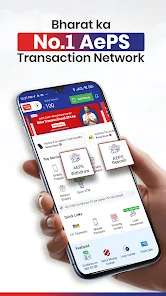Kiosk banking is transforming the financial sector by offering a self-service solution that enhances accessibility and efficiency. As financial institutions continue to expand their services, bank kiosk pricing becomes a crucial factor in determining the feasibility of these solutions. Whether for urban or rural banking, kiosks provide a streamlined approach to financial transactions while reducing operational costs. Understanding the pricing of these kiosks helps businesses and financial institutions make informed decisions about implementing cost-effective banking solutions.

What is Kiosk Banking?
Kiosk banking allows customers to access essential financial services through automated terminals without the need for traditional bank branches. These kiosks are designed to facilitate transactions such as deposits, withdrawals, account inquiries, and fund transfers. They operate with user-friendly interfaces and secure technology, ensuring seamless banking experiences for customers. As the demand for self-service banking grows, institutions must evaluate the costs and benefits associated with bank kiosk pricing to optimize their financial services.
Factors Affecting Bank Kiosk Pricing
1. Hardware & Equipment Costs
The primary component influencing bank kiosk pricing is the hardware. Costs vary depending on the type of kiosk, whether it is a basic transaction unit or an advanced multi-functional system. Factors such as touchscreens, biometric authentication, and card readers can affect pricing significantly.
2. Software & Integration
Kiosk banking requires robust software to manage transactions securely. The cost of integrating banking software with existing financial systems plays a crucial role in determining overall pricing. Customizable software solutions may also impact costs based on the features and compliance requirements.
3. Installation & Setup
Setting up a bank kiosk includes expenses related to installation, connectivity, and infrastructure requirements. Financial institutions must consider whether kiosks are deployed indoors or outdoors, as environmental conditions may require additional protective measures.
4. Maintenance & Support
Regular maintenance is essential for ensuring smooth operations of banking kiosks. Pricing structures often include service agreements, software updates, and technical support. Choosing a vendor with reliable support services can reduce long-term operational costs.
5. Security & Compliance
Security measures such as biometric authentication, data encryption, and regulatory compliance contribute to pricing. Adhering to financial security regulations ensures customer safety and trust while maintaining operational efficiency.
Benefits of Affordable Bank Kiosk Solutions
1. Increased Accessibility
Kiosk banking extends financial services to remote and underserved areas, eliminating the need for traditional branches. Customers can access banking services conveniently, promoting financial inclusion.
2. Cost Savings for Banks
Investing in bank kiosks reduces operational costs associated with branch maintenance, staffing, and infrastructure. Automated kiosks allow financial institutions to serve more customers without increasing overhead expenses.
3. Enhanced Customer Experience
Self-service kiosks provide quick and easy access to banking services, reducing wait times and improving customer satisfaction. Features such as multi-language support and intuitive interfaces enhance user experience.
4. Secure Transactions
With advanced authentication methods, kiosk banking ensures secure financial transactions. Security features such as OTP verification and biometric authentication help prevent fraud and unauthorized access.
5. Scalability & Flexibility
Bank kiosks offer scalable solutions for financial institutions looking to expand their reach. With various models available, banks can customize kiosk services based on customer demand and location requirements.
How to Choose the Right Bank Kiosk Solution
Selecting the right kiosk banking solution involves analyzing bank kiosk pricing, operational needs, and security measures. Financial institutions should consider:
- Budget & Cost Analysis: Understanding the total cost of ownership, including initial setup and long-term maintenance.
- Functionality & Features: Evaluating essential features such as biometric verification, cash deposit options, and mobile banking integration.
- Vendor Reputation & Support: Choosing a reliable provider with a track record of quality service and customer support.
- Compliance & Security Standards: Ensuring that the kiosk solution meets regulatory requirements and industry security standards.
Conclusion
Kiosk banking is revolutionizing financial services by offering cost-effective, secure, and accessible solutions. Understanding bank kiosk pricing is essential for institutions seeking to enhance service delivery while managing operational expenses efficiently. By investing in the right kiosk solutions, financial institutions can improve customer experiences and drive financial inclusion. Evaluating affordability, security, and service quality ensures that bank kiosks remain a valuable asset in modern banking infrastructure.